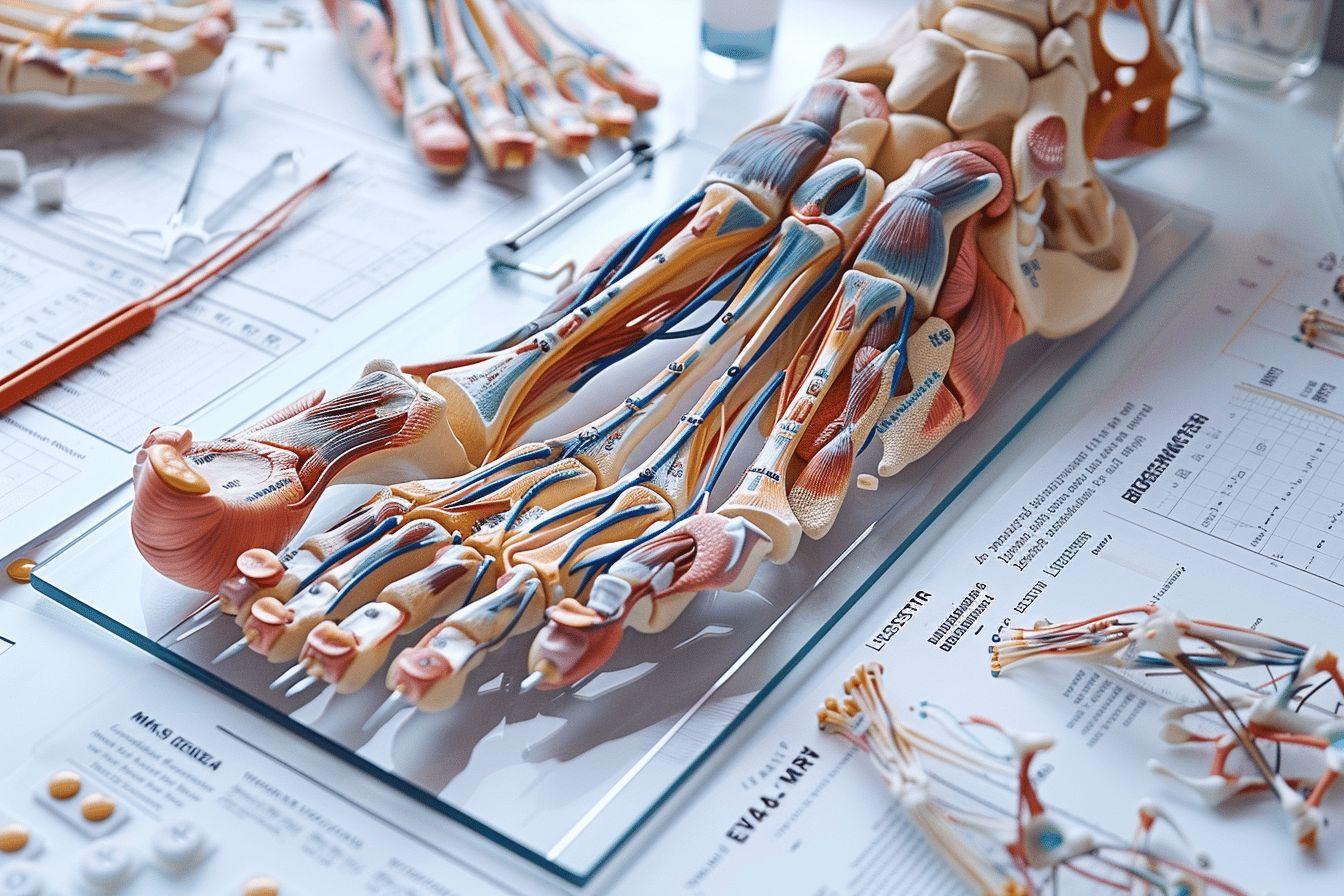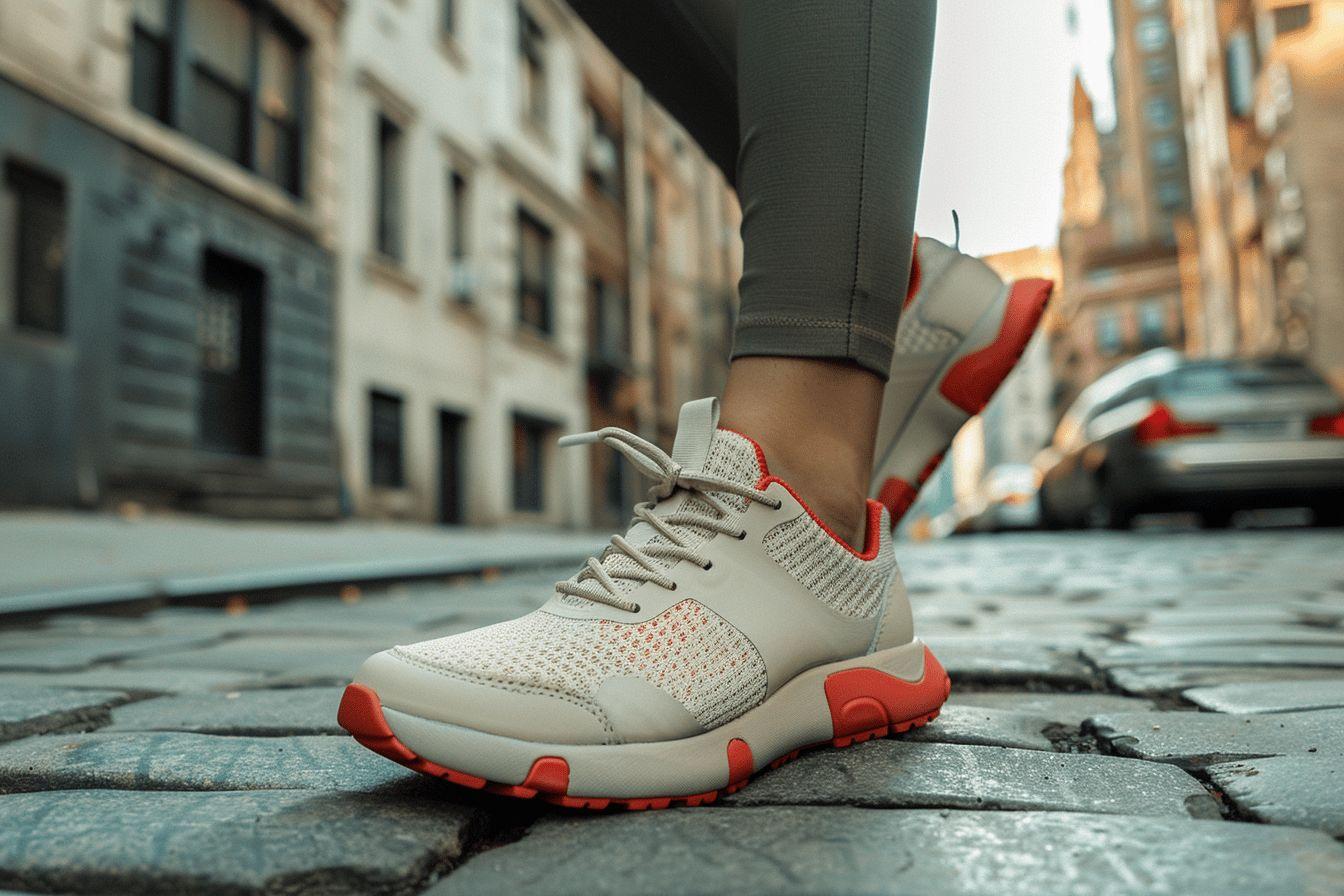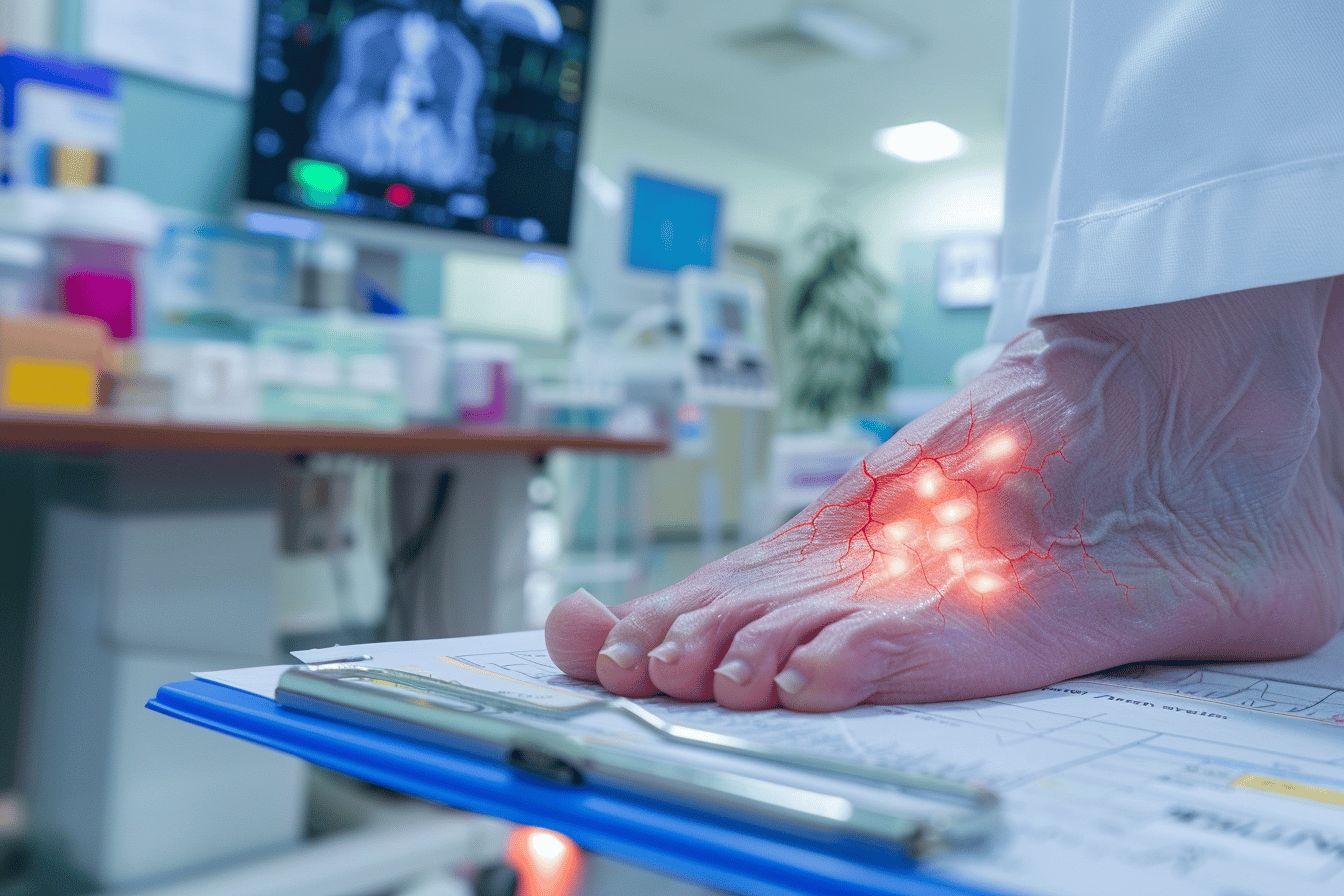The human foot, a marvel of natural engineering, plays a crucial role in our mobility and balance.
- Complex structure: 26 bones, 33 joints, intrinsic and extrinsic muscles
- Arch: Natural shock absorber and weight distributor
- Vascular and nervous system: Essential blood supply and innervation
- Postural role: Stabilizing platform with proprioceptive receptors
- Importance of care: Maintaining long-term health and mobility term
The human foot is a marvel of natural engineering, composed of complex structures that allow us to walk, run, and maintain our balance. Understanding the anatomy of the foot is essential to appreciate its function and take care of this vital part of our body. Let's analyze the different parts of the foot and their crucial roles in our daily mobility.
Bone Structure and Joints of the Foot
The skeleton of the foot is a remarkable assembly of 26 bones and 33 joints. This complex architecture is divided into three main regions:
- The hindfoot: comprising the calcaneus (heel) and the talus
- The midfoot: formed by the cuneiform, cuboid, and navicular bones
- The forefoot: composed of the metatarsals and phalanges
The heel, the posterior part of the foot, plays a crucial role in absorbing shock when walking. However, it can sometimes be the site of intense pain. Treating a heel spur may be necessary to regain pain-free mobility.
The joints of the foot allow a range of motion essential for locomotion. The tibiotarsal joint, located between the leg and the foot, is particularly important for flexion and extension of the foot. The joints between the tarsal bones provide crucial stability when walking on uneven surfaces.

| Foot Region | Major Bones | Primary Function |
|---|---|---|
| Rearfoot | Calcaneus, Talus | Shock Absorption |
| Midfoot | Cuneiform, Cuboid, Navicular | Adaptation to Surfaces |
| Forefoot | Metatarsals, Phalanges | Propulsion and Balance |
Muscles and Tendons: The Engines of Movement
The muscles of the foot are essential for performing the fine and powerful movements necessary for walking and balance. There are two main groups:
Intrinsic muscles are located entirely within the foot. They include the interosseous muscles, the lumbricals, and the short muscles of the big toe. These muscles are responsible for subtle movements of the toes and help maintain the shape of the arch of the foot.
Extrinsic muscles originate in the leg and attach to the bones of the foot via long tendons. These include the triceps surae, responsible for plantar flexion, and the tibialis anterior and posterior muscles, which control lateral movements of the foot.
Tendons, the fibrous cords that connect muscles to bones, play a crucial role in transmitting muscle force. The Achilles tendon, the largest in the human body, connects the calf muscles to the heel bone and is essential for walking and running.
Note that the shape of the foot can vary from one person to another. For example, the Egyptian foot is a fascinating anatomical feature that can influence the biomechanics of the foot.
The arch of the foot: the keystone of the foot structure
The arch of the foot is a unique feature of the human foot, playing a crucial role in our ability to walk upright. This arched structure is formed by the arrangement of the bones, ligaments, and muscles of the foot. It consists of three main arches:
- The medial longitudinal arch: the most pronounced, it extends from the heel to the base of the big toe
- The lateral longitudinal arch: less pronounced, it runs from the heel to the base of the little toe
- The transverse arch: it crosses the foot from one side to the other at the metatarsals
The arch of the foot acts as a natural shock absorber, absorbing shock when walking or running. It evenly distributes body weight across the entire foot, thus optimizing balance and stability. Ligaments, particularly the long plantar ligament, play a crucial role in maintaining this structure.
Nevertheless, the arch of the foot can sometimes be the site of intense pain, particularly in cases of plantar fasciitis. This condition, which affects the plantar fascia, a band of connective tissue running along the sole of the foot, can significantly impede mobility.
Vascular and Nervous System of the Foot
The foot has a complex vascular and nervous system, essential to its proper functioning. Blood circulation to the foot is provided primarily by the posterior tibial artery and the dorsalis pedis artery, branches of the femoral artery. This vascular system provides the necessary oxygen and nutrients to the tissues of the foot.
Venous return, equally important, is facilitated by a network of superficial and deep veins. The plantar veins play a crucial role in this process, aided by the "venous pump" created by muscle contractions during walking.
The foot is innervated by several major nerves:
- The tibial nerve: innervates the sole of the foot and toes
- The superficial peroneal nerve: responsible for sensation in the dorsum of the foot
- The sural nerve: innervates the outer part of the foot
These nerves transmit sensory information to the brain and control the movements of the foot muscles. Good blood circulation and adequate innervation are essential for maintaining foot health and preventing various pathologies.
Role of the foot in posture and balance
The foot plays a fundamental role in our posture and balance. It acts as a stabilizing platform on which the entire body rests. Proprioceptive receptors in the joints, muscles, and tendons of the foot constantly send information to the brain about the body's position in space.
The skin on the sole of the foot, particularly rich in nerve endings, acts as a true sensor. It detects changes in ground pressure and texture, effectively enabling rapid and precise postural adjustments.
The forefoot, with its toes, plays a crucial role in maintaining balance. When walking or running, the toes grip the ground, providing additional surface contact and improving stability. This action is particularly important when changing direction or on unstable terrain.
Ultimately, understanding the complex anatomy of the foot allows us to appreciate its vital role in our daily mobility. From bone structure to muscles, vascular system, and nervous system, every component of the foot contributes to our ability to stand, walk, and run. Taking care of our feet is an investment in our long-term mobility and quality of life.





Leave a comment
This site is protected by hCaptcha and the hCaptcha Privacy Policy and Terms of Service apply.